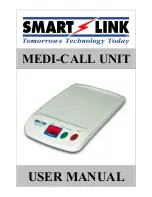
Phone Provisioning
70
Phone Provisioning
You can provision multiple phones with the same settings for large-scale deployments.
For more information, refer to
Yealink SIP IP Phones Auto Provisioning Guide
Topics
Boot Files, Configuration Files, and Resource Files
Provisioning Methods
Setting Up a Provisioning Server
Keeping User’s Personalized Settings after Auto Provisioning
Example: Deploying Phones from the Provisioning Server
Boot Files, Configuration Files, and Resource Files
You can use boot files, configuration files, and resource files to configure phone features and apply feature settings
to phones. You can create or edit these files using a text editor such as +.
You can ask the distributor or Yealink FAE for template files. You can also obtain the template files online:
port.yealink.com/documentFront/forwardToDocumentFrontDisplayPage
Topics
Boot Files
Configuration Files
Resource Files
Files Download Process
Boot Files
Yealink phones support boot files. The boot files maximize the flexibility to allow you to customize features and set-
tings for multiple phones.
With the boot file, you can specify which configuration files should be downloaded. It is effective for you to provision
the phones in different deployment scenarios:
l
For all phones
l
For a group of phones
l
For specific phone models
l
For a single phone
Yealink phones support two types of boot files: common boot file and MAC-Oriented boot file. You can use the
default boot template file “y000000000000.boot” to create MAC-Oriented boot file by making a copy and renaming
it.
Note
: You can select whether to use the boot file or not according to your deployment scenario. If you do not want to use the
boot file, please go to
.
Topics
Common Boot File
MAC-Oriented Boot File
Boot File Attributes
Customizing a Boot File
Common Boot File
Common boot file, named y000000000000.boot, is effective for all phones. You can use a common boot file to
apply common feature settings to all of the phones rather than a single phone.
















































